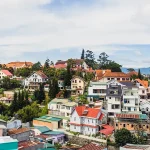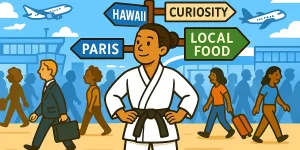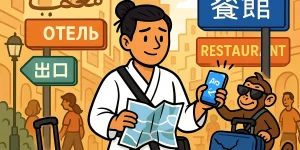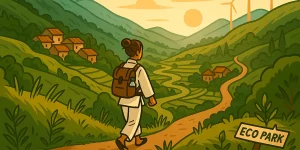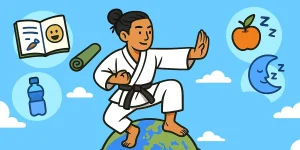Be Curious. Be Cautious. Travel Free.
One universal truth we’ve learned from our travels is this: Everywhere can be safe to travel—and nowhere is absolutely safe. Unexpected situations can happen anywhere, but with the right knowledge and preparation, you can minimize risks and enjoy a stress-free trip.
In this guide, we’ll share insights on how to:
- Know where you are going (researching travel safety guidelines and understand which countries are safe to visit).
- Know what you are doing (stay aware, blend in, and follow smart safety habits).
- Follow essential travel safety tips (prepare in advance, stay alert, and focus on adventure while ensuring safe travels)
This article is your Green Belt initiation in the Trip Kwon Do Travel Academy — the stage where smart habits and street-savvy thinking become second nature. If this is your first time here, make sure to start with our Travel Academy introduction to understand what Trip Kwon Do is all about.
Table of Contents

Know Where You Are Going – Which Countries Are Safe to Visit?
Your first step in ensuring safe travels is assessing the safety of your destination. While we keep updated information on our website, it’s always a good idea to cross-check multiple sources. If you’re still choosing where to go, our guide on finding cheap flights can help you align your safety priorities with budget travel goals.
Official Government Travel Advisories:
- U.S. State Department
- Government of Canada Travel Advice and Advisories
- UK Foreign Travel Advice
- Many other governments provide updated reports on political stability, natural disasters, and health risks—be sure to check official websites.
Local News & Forums: These can be useful, but remember: what’s safe for locals isn’t always safe for tourists, and vice versa. Also, news reports can sometimes be sensationalized or politically influenced, which might not always reflect the real situation on the ground.
So, stay informed, but also think critically and use your own judgment.
Vaccinations
Vaccinations can be a sensitive topic, and we’re not here to tell you what to do—it’s your personal decision. However, there are some key things to keep in mind for safe travels:
Different destinations pose different health risks. Organizations like the Centers for Disease Control and Prevention (CDC) and the World Health Organization (WHO) offer travel safety guidelines on recommended vaccines for each country.
Some countries require proof of vaccination—for example, a Yellow Fever certificate is mandatory for entry into certain African and South American countries. Check entry requirements early! Some vaccinations need to be administered weeks in advance, so don’t leave it until the last minute.
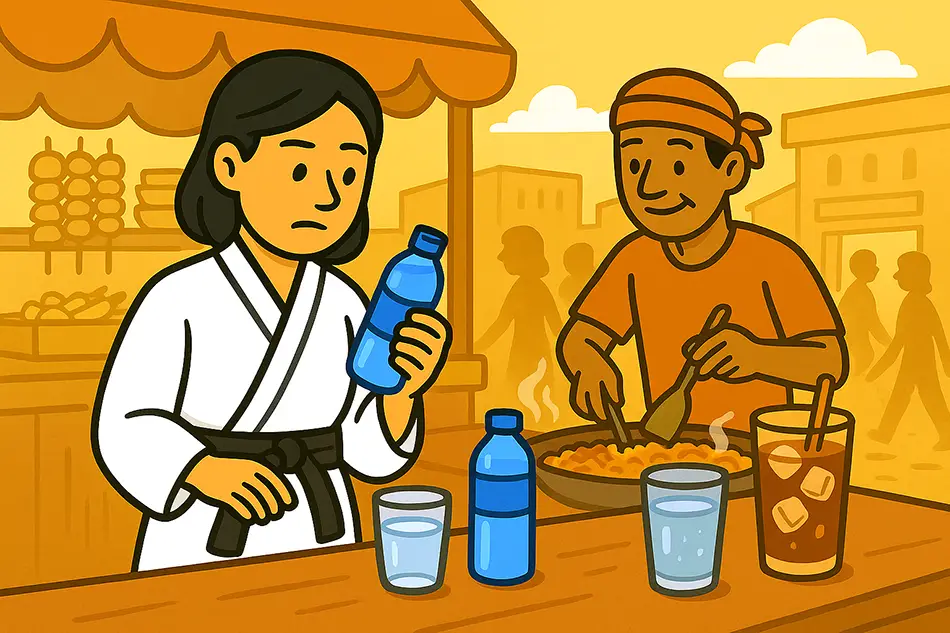
Is Tap Water Safe?
One of the most common questions when planning a trip is: “Can I drink the tap water there?” The answer varies widely depending on your destination.
Check reputable sources:
- CDC’s Safe Water Guide
- Local travel health advisories
We also provide this information in our country-specific guides to help you travel safely.
When in doubt: Stick to bottled or properly filtered water to avoid stomach troubles that could ruin your trip.
Typical Travel Scams
Travel scams are surprisingly predictable, and many are region-specific. Doing a little research on common travel scams before your trip can save you money, time, and stress. Here are some classic examples from around the world:
- The Shoe-Shining Scam (Istanbul) – A shoeshiner “accidentally” drops his brush near you, offers a “free” polish, then demands an inflated payment afterward.
- The Coconut Ladies Scam (Vietnam) – You accept a “cheap” coconut on the beach from a sweet old lady. Since you didn’t confirm the price, you’re forced to pay 10 times the usual rate.
- The “Red Zone” Hotel Scam (India) – Airport taxi driver warns you that your hotel is in a dangerous area (or claims it’s “closed”), then takes you to their preferred hotel with overpriced rooms.
Emergency Numbers
We all know 911 or 999, but guess what? Those aren’t universal.
Before you land in a new country, take one minute to look up local emergency hotlines for:
- Police
- Ambulance
- Fire department
- Your country’s embassy or consulate
A tiny step that can make a huge difference in an emergency!
Once you’re familiar with your destination’s health precautions, scams, and safety guidelines, half the battle is won. The other half? How you carry yourself.
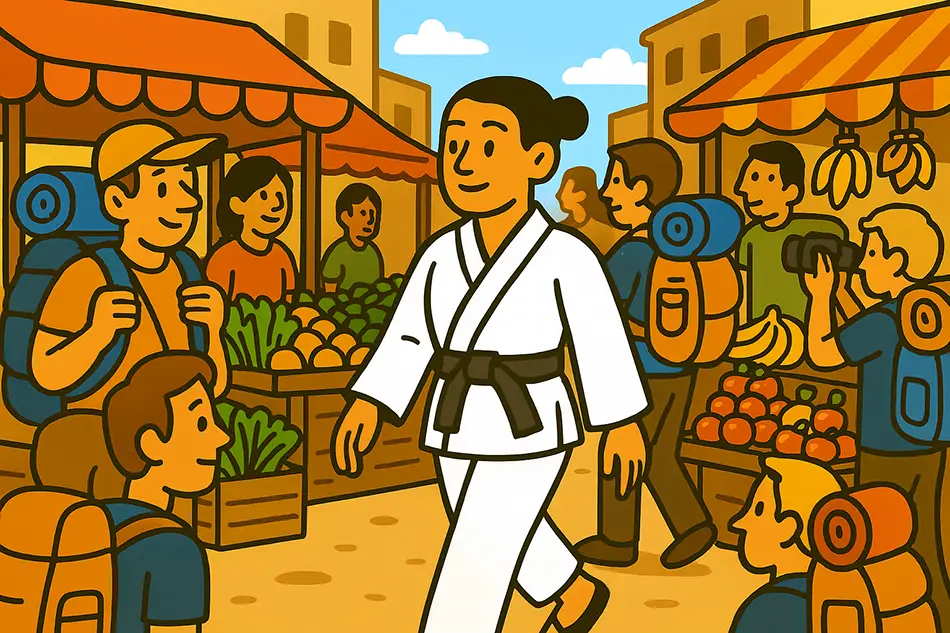
Know What You Are Doing – Smart Ways to Stay Safe While Traveling
A huge backpack, a lost expression, or flashy jewelry can make you an easy target for scammers and pickpockets. If you look uncomfortable or out of place, you might attract the wrong kind of attention.
Blend In
You don’t need to dress exactly like the locals—sometimes that can backfire. Instead, observe how people carry themselves and adapt to the local vibe.
How you act matters just as much as how you look. Keep these key habits in mind:
- Act Confident (Even If You’re Lost) – Keep your head up, walk with purpose, and don’t broadcast confusion.
- Avoid Dark & Isolated Areas – At night, stick to well-lit, busy streets or travel with friends.
- Don’t Flaunt Valuables – Leave expensive jewelry, flashy watches, and designer bags at home—or at least out of sight.
Stay in Control
The best travel safety advice? Stay clear-headed—especially in an unfamiliar environment. We’re not here to lecture you, but seriously, if you’re going out, know who you’re with and what you’re consuming. A simple rule for staying safe while traveling is to never accept drinks from strangers and always keep an eye on your glass.
When it comes to trying new things abroad, be mindful—purchasing or using restricted substances is one of the fastest ways to lose money or land in serious trouble. Many travelers have been scammed, set up, or even faced legal issues from one reckless decision.
At Guides & Stories, we believe that no thrill beats the excitement of exploring a new destination with a clear mind. But if you do choose to indulge, do it responsibly. Know your limits, stay aware, and don’t let one bad decision ruin an unforgettable trip.
Don’t Get Stuck in Your Phone
Constantly staring at your screen makes you:
- A prime target for theft or scams.
- Appear distracted — ideal for pickpockets.
- Miss what’s happening around you.
That said, when used wisely, the right digital tools can be a game-changer. We’ve rounded up the best travel apps that help without distracting. Just remember: if you need to check your map or messages, find a safe spot, memorize your route, and then walk confidently.
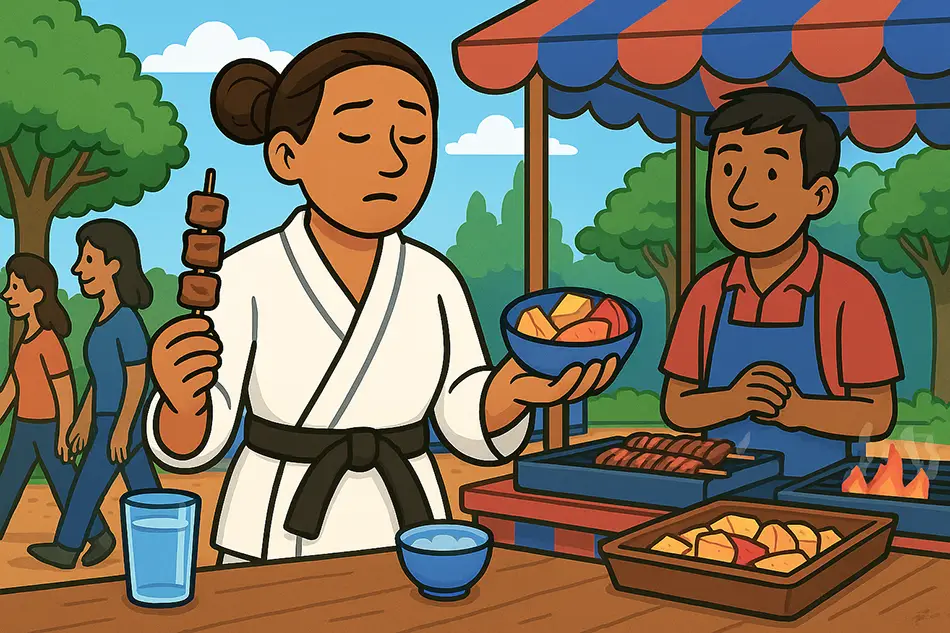
Eat Smart, Stay Healthy
Nothing ruins a trip faster than food poisoning. While trying local cuisine is one of the best parts of travel, certain foods carry more risk than others. Meat and seafood are generally riskier than vegetables, but pre-cut fruits and vegetables can also be unsafe if they’ve been sitting out too long.
The first question to ask before eating street food or anything from a questionable place is: How long has my food been sitting out? A pre-fried meat skewer late at night may have been cooked hours ago and left at unsafe temperatures. If you’re unsure, it’s better to skip it.
A great way to find safe, high-quality food? Forget online reviews and influencer recommendations—trust the locals. If a café, food stall, or restaurant is busy with locals, chances are it’s fresh and safe. People who eat the same food daily know where to go, and no one wants to serve bad food to their neighbors.
In destinations where tap water isn’t safe, ice can also be a risk. A simple rule: If you wouldn’t drink the tap water, don’t consume the ice.
A quick way to assess ice safety:
- Clear, cylindrical ice with a hole in the middle is usually made in commercial ice machines using purified water, making it safer.
- Cloudy, irregular-shaped ice is likely homemade from tap water and poses a higher risk.
This isn’t a strict rule, but a useful guideline. When in doubt, skip the ice to avoid unnecessary risks and enjoy your trip without disruptions.
Carry a Whistle – A Small Tool for Big Travel Safety
When it comes to travel security gadgets, one of the most lightweight yet effective tools is a whistle. It’s small, easy to carry, and incredibly useful in various situations.
How a Whistle Can Enhance Your Travel Safety:
- Personal Safety – If someone is harassing or following you, a loud whistle can startle them and attract attention.
- Emergency Signal in Remote Areas – If you get lost while hiking or stranded, a whistle carries farther than your voice, helping rescuers locate you.
- Deterrent Against Theft – If someone tries to snatch your bag, blowing a whistle can disrupt their attempt and alert bystanders.
Many travelers overlook simple yet powerful tools like this. While anti-theft bags and portable door locks are great additions, if there’s one must-have tool for safe travels—it’s a whistle.
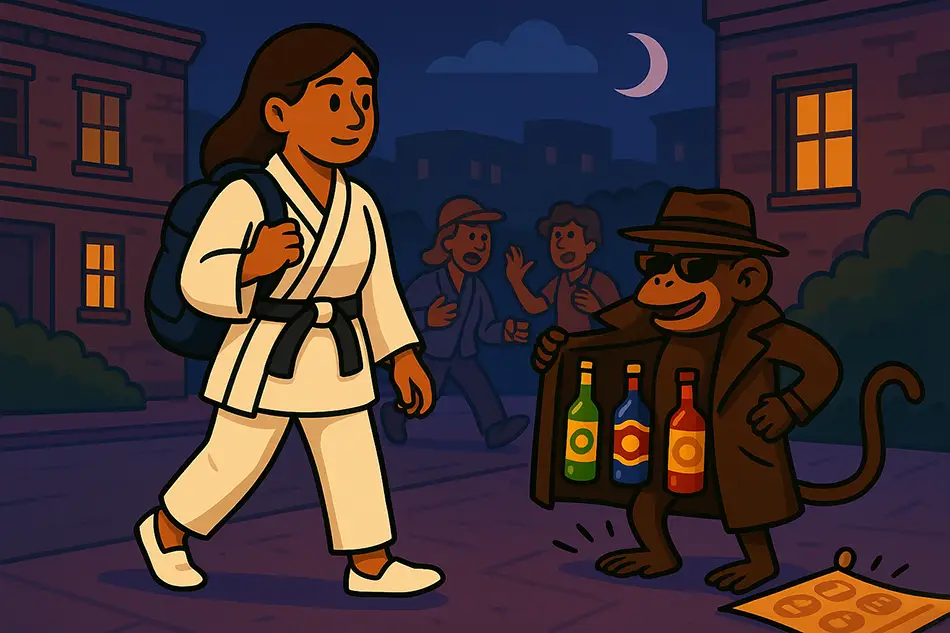
Tighten the Belt: Final Safety Moves for the Road
You’ve already built the mindset — now it’s time to fine-tune your habits. These travel safety tips add that extra layer of security, helping you stay even more prepared no matter where you go next.
Arrive at New Destinations in Daylight: Arriving during the day isn’t just safer—it also makes it easier to navigate public transport and find your accommodation without stress.
Trust the 15-Minute Rule: When arriving somewhere new, give yourself 15 minutes to get oriented before making decisions (e.g., booking transport, accepting help). Rushing makes you more vulnerable to scams.
Share Your Itinerary with Someone You Trust: If something goes wrong, a trusted friend or family member should know where you were supposed to be.
Don’t Keep All Your Money & Payment Cards Together: Hide emergency cash and an extra debit/credit card in a separate place—just in case your wallet gets lost or stolen
Keep Small Bills Handy: Avoid pulling out large amounts of cash in crowded places. Keeping small bills accessible can also make transactions quicker and safer.
Don’t Accept “Free Gifts”: If a stranger hands you something for free, be cautious—it’s often a trap. Many scammers expect payment after the fact, even if they claim it’s a “gift.”
These simple habits go a long way in ensuring safe travels.
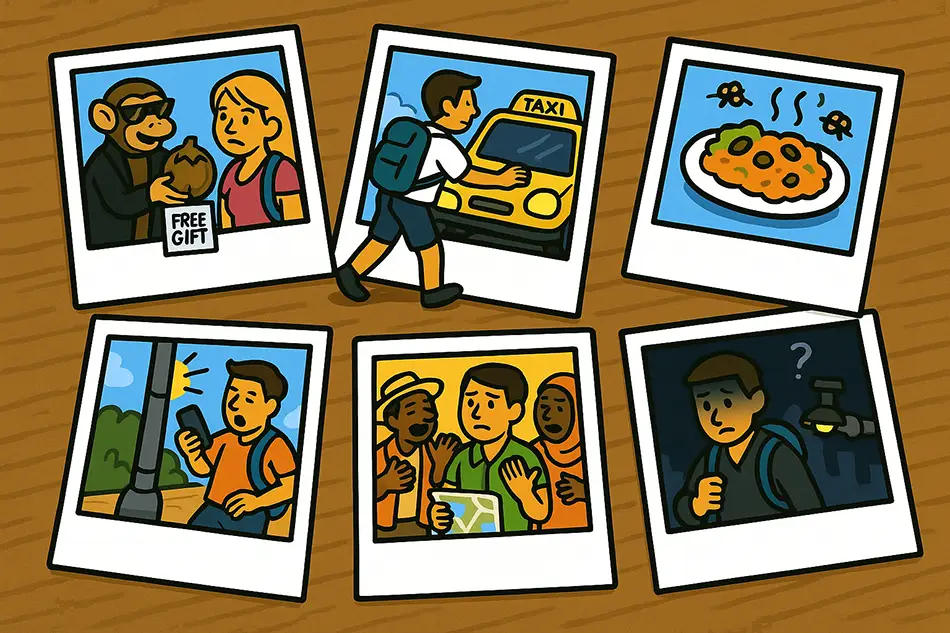
Travel Safety Q&A – Your Most Important Questions Answered
Stay aware of your surroundings, avoid risky areas, and secure your valuables. Dress appropriately for the location, walk with confidence, and trust your instincts in unfamiliar situations. Keep a whistle handy.
The safest way to travel is by using reputable airlines, staying in secure accommodations, and relying on official transportation. Avoid isolated areas at night and consider guided tours for extra security.
No gadget replaces caution, but a whistle is the top must-have for emergencies. Anti-theft backpacks, RFID-blocking wallets, and portable door locks add extra security for your belongings.
Keeping a clear head is key. Situations can escalate quickly, and people may pressure you into rushed or irrational decisions. The most important skill is knowing when to pause and take a moment to think. Stay alert, trust your instincts, and never let urgency force you into a bad choice. A calm mind is your best safety tool. For more real-life travel mindset training, check out how we approach overcoming travel fears in the early stages of the Travel Academy.
Make copies of important documents, share your itinerary with someone you trust, and avoid displaying valuables. Know emergency numbers, carry essential medications, and be cautious with food and water safety to prevent health issues.
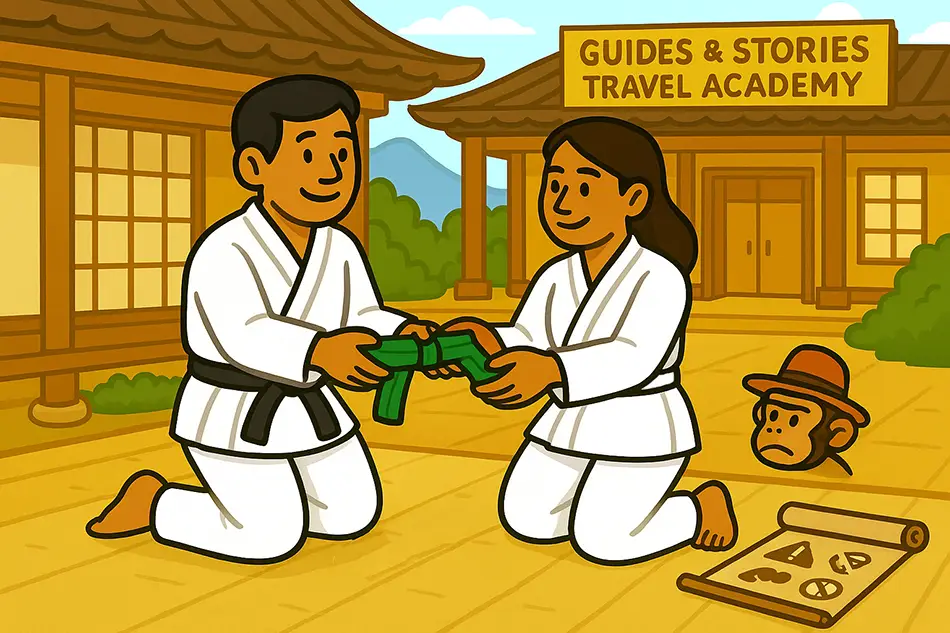
Final Thoughts on Travel Safety
Travel safety isn’t about shutting yourself off from the world — it’s about learning how to move through it with clarity and confidence. Some of the best moments happen when plans shift, strangers become friends, or curiosity takes the lead. But those moments are better when you’re sharp, not shaken.
This guide marks your Green Belt level in the Trip Kwon Do Travel Academy — the moment when you stop relying on luck and start relying on skill. You’ve learned how to stay alert, blend in, and protect yourself without closing yourself off.
Because the truth is: not every risk is worth taking — and not every detour is dangerous. The key is knowing the difference.
You’re now equipped to move smarter, trust your instincts, and stay open to the real magic of the road. The journey doesn’t end here.
Return to the Travel Academy hub to unlock your next belt — every guide builds on your skills and gets you closer to travel mastery.


